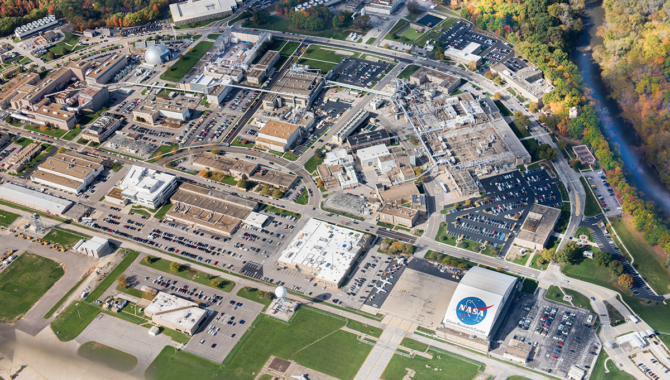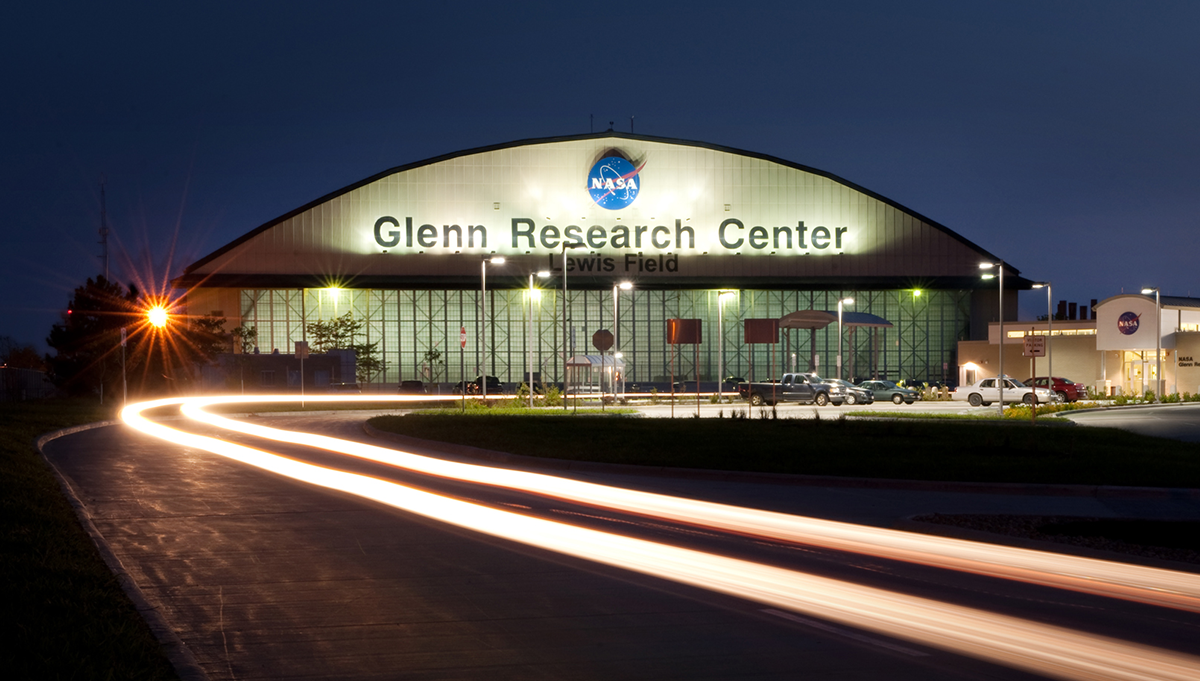
Aerial view of Glenn Research Center in Cleveland, Ohio. Credit: NASA
Nearly 200 gather to discuss key issues for technical workforce.
From developing the spacecraft that will be used to establish a long-term human presence at the Moon, to missions that are exploring the arid canyons of Mars, flying through the Sun’s corona, and looking 13.8 billion years into the history of the Universe, NASA’s engineers, scientists, and technical specialists consistently push the boundaries of the possible.
What happens when a team member retires or moves to a new assignment?
On November 6, 2024, nearly 200 members of NASA’s technical workforce gathered both virtually, and in person at Glenn Research Center (GRC), to explore that question and more at the 4th Annual NASA Knowledge Workshop. This year’s program focused on knowledge continuity and succession planning, two important areas for NASA’s specialized technical workforce.
“People are spread thin, and it can be hard to keep the right people and the right knowledge in the right place,” said George Santosuosso, the Chief Knowledge Officer (CKO) at GRC, and an organizer of the event. “The goal for this workshop is to talk about the challenges of maintaining workforce continuity and discuss potential solutions that can be put into effect at the team and the personal level.”

Engineers in a clean room at NASA’s Jet Propulsion Laboratory in Southern California build the nadir deck for NASA’s Europa Clipper spacecraft. The success of large missions, such as Europa Clipper, rely on high-performing teams and effective knowledge management. Credits: NASA/JPL-Caltech
The workshop’s theme, Knowledge Continuity for Changing Teams, underscored the dynamism of teams working on NASA projects and missions, where some members stay for decades before retiring and others move to a new project in a few years. This places great importance on taking proactive measures to capture and transfer knowledge to new members to maintain high-performing teams.
Attendees heard from CKOs at several NASA Centers, discussing their work with succession planning and sharing lessons learned. Tiffany L. Smith, NASA’s CKO and Director of APPEL Knowledge Services, presented an agency-level overview. The workshop highlighted the importance of knowledge continuity and succession planning and the challenges of implementing knowledge continuity practices.
Smith noted that managing the vast amount of knowledge created at NASA, where the workforce comes in every day to work on missions that would have been inconceivable when the Agency was founded in 1958, is daunting.
“When you think about it from that perspective, … it’s insurmountable, it’s tremendous. And so, the idea that we could ever manage that—we can’t. I’ll just start there as a point. But what we can do is think about how we help people collaborate, think about how we help to channel knowledge to the places where it needs to go.”
When deciding what knowledge to prioritize in continuity efforts, Smith noted it’s important to consider the context of the knowledge, how it connects to other work at NASA, and its potential benefits. She noted that the best knowledge management practices involve the whole team.
“We rely on groups to validate what we know, ask questions, contribute ideas to make ideas better. We ask them to work together to apply the group’s knowledge and then maintain that knowledge over time,” Smith said. “If you have a group that’s working really well, that really recognizes the expertise of the folks in the group and the other people that they learn from, you see them doing activities around: ‘How do we better understand? How do we better characterize the knowledge of this group? How do we think through organizational learning and improve our processes from one time to the next so that we get better results?’”
Dr. Moses Adoko, the CKO at NASA’s Goddard Space Flight Center, led a panel discussion about the requirements to create a culture of workforce succession. The panelists, drawn from the technical workforce at GRC, identified gaps in succession planning processes, such as inconsistent prioritization, procedural delays in filling critical roles, and adapting to the changing type of work NASA teams do.
However, several strategies emerged to address these challenges:
- Competency Management Systems: Developing tools to assess current skills and anticipate future needs.
- Cross-Training and Mentoring: Encouraging employees to share knowledge and develop versatile skill sets.
- Proactive Hiring Practices: Implementing phased retirements and streamlined hiring processes for critical roles.
Next, former NASA CKO Dr. Edward Hoffman spoke about the intangibles of sustained success, emphasizing the growing importance of two key elements: knowledge and relationships. Hoffman said that successful organizations and teams leverage these elements, adapting to change and fostering trust among members.
Hoffman explained how he has seen the modern workforce changing from his teaching position at Columbia University, with young employees increasingly emphasizing personal growth, flexibility, and diverse roles. He noted that some companies are capitalizing on this by creating dynamic job opportunities that combine core work with personal development and leadership training.
Michelle Drabik, the CKO of NASA’s Jet Propulsion Laboratory, spoke about knowledge management at JPL, describing some specific knowledge continuity practices used at the center. These include a “continuity book” template to capture key role-specific knowledge. Drabik also discussed the challenges and lessons learned in implementing knowledge continuity practices at the center.
“The goal here is to capture tacit knowledge—the knowledge in our heads. This can include personal wisdom, experience, insight, and intuition.”
The workshop concluded with a conversation between Hoffman and Dr. Wanda Peters, the Acting Deputy Center Director at GRC. Peters holds a Ph.D. in systems engineering and a master’s degree in engineering management. She spoke of the strong support and guidance she received from her family, especially her parents, as she began her career. They emphasized the importance of learning, hard work, and determination. She also attributes her success to her willingness to step out of her comfort zone, take on new challenges, and make the most of every opportunity that comes her way.
Earlier in the workshop, Santosuosso noted that although succession and continuity planning come into sharp focus when a team member retires or moves to a new project, the process of knowledge capture can be done at any time. Once the knowledge is captured, it can be deployed when and where it’s needed.
“This does not need to wait for retirement,” Santosuosso said. “This can be applied at any point throughout a career, and I would actually encourage that. The goal here is to capture tacit knowledge—the knowledge in our heads. This can include personal wisdom, experience, insight, and intuition. It’s a little less concrete, but it’s very valuable because it provides context. Another way to look at this it’s the stuff that we don’t know that we know.”
To learn more about knowledge continuity and succession planning, visit the APPEL Knowledge Services Knowledge Capture and Transfer page and the report Ensuring Knowledge Continuity during Employee Transitions.









